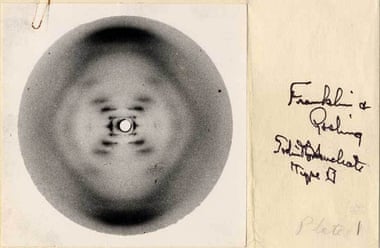Showing posts with label homework. Show all posts
Showing posts with label homework. Show all posts
Homework
Activity 1
Recall the text Bad
luck, read this paragraph and write a conclusion including these
words: controversy, scientists, environmental factors, bad luck (random
mutations), cancer, probability.
Hace
no mucho, la ciencia parecía dar la razón a quienes creían en el
destino, aunque este no estuviese escrito en las estrellas sino en el
interior de nuestras células. La secuenciación de genomas completos
ayudaría a predecir qué enfermedades podría padecer una persona
cuando se aproximase a la vejez y qué hábitos debería evitar para
sortear los riesgos escritos en sus genes.
Sin embargo, aunque
la herencia tiene una influencia importante en muchas enfermedades,
estudios recientes muestran que la predicción de nuestro futuro va a
requerir más que leer y entender el código
genético.Recientemente, un polémico estudio publicado en la revista Science, afirmaba que la 'mala suerte' explica dos tercios de todo el riesgo de cáncer en un tejido mientras que las variables genéticas y ambientales explican otro tercio. Ahora, un trabajo publicado en Cell concluye que las variaciones en el sistema inmune, el departamento de defensa del organismo que ayuda a combatir el cáncer y el resto de enfermedades, le deben mucho más a las experiencias y al entorno en que se ha vivido que a las condiciones heredadas. Para responder con éxito ante una infección o un tumor incipiente, el mecanismo de protección del organismo debe ser flexible frente a las presiones ambientales y la experiencia vital de cada individuo lo personaliza.
Genetic problems
In
cats, fluffy is dominant to silky and chubby is dominant to skinny.
- One parent is homozygous silky and homozygous chubby. The other parent is heterozygous for all traits. What percentage of the offspring may be fluffy and thin?
- One parent is homozygous fluffy and heterozygous chubby and the other is homozygous silky and heterozygous chubby.
- What percent of their offspring could be fluffy and chubby?
- What percent of the offspring could be homozygous for fluffiness?
- What percent of the offspring could be homozygous for chubbiness?
- Both parents are heterozygous for both traits
- What fraction of the offspring could have the exact same genotype as the parents?
- What fraction of the offspring could have the same phenotype as the parents?
In
eagles, bald is dominant to feathers and loner is dominant to
groupie.
- One parent is heterozygous bald and homozygous loner. The other is homozygous recessive for both traits.
- What percentage of the offspring may be feathered loners?
- One parent is homozygous dominant for both traits and the other is homozygous recessive for both traits.
- What percentage of the offspring may be bald groupies?
- What percentage of the offspring may be heterozygous for both traits?
- One parent is homozygous bald and homozygous groupie. The other is heterozygous for both traits.
- What percentage of the offspring may be homozygous bald and heterozygous loners?
- What percentage of the offspring may be feathered groupies?
An
aquatic arthropod called a Cyclops has antennae that are either
smooth or barbed. The allele for barbs is dominant. In the same
organism, resistance to pesticides is a recessive trait.
7.
Make a "key" to show all the possible genotypes (and
phenotypes) of this organism.
Rosalind Franklin
Read these Britannica’s and The Guardian's entries and answer:
- Who was Rosalind Franklin?
- What are the scientific areas she worked in?
- What did she discover related to the DNA?
- What did she discovered related to viruses?
- What is “photograph 51”? What is the name of the technique she used to take it?
- Why wasn't she awarded the Nobel Prize?
- Who were awarded this Prize?
- Who was Maurice Wilkins?
Homework
GENETIC TRAITS?
1. Go over each of the following traits and determine if you or your relatives exhibit the phenotype. Also view the presentation that shows pictures of these traits at Human Genetic Traits
You can add more traits or diseases.
| Trait Description | Yourself | Your relatives |
| Ear points (Darwin's Point) | ||
| Tongue rolling | ||
| Plays a sport | ||
| Attached earlobe | ||
| Plays an instrument | ||
| Hitchhiker’s Thumb | ||
| Upturned Nose | ||
| Left-Handed | ||
| Freckles | ||
| Bent little fingers | ||
| Curly hair | ||
| Short big toe | ||
| Eye Color (blue?)* | ||
| Straight Hairline (not widow's peak) | ||
| Chin dimple or cleft | ||
| Hand clasping, left over right thumb | ||
| Hair on middle joints of fingers | ||
| G.P.A. (grade point average)of 4 or above (A students= 10 students) | ||
| Ring finger longer than index finger** | ||
| Likes broccoli | ||
| Arm folding fold arms across stomach, is left on top? | ||
| Popularity (how many consider themselves popular) | ||
| Nearsighted | ||
| Gap between front teeth |
2. Make a pedigree of your family showing the treats you share with your relatives (you can use colors to represent each treat). (Note: circles:women).
Subscribe to:
Posts (Atom)






